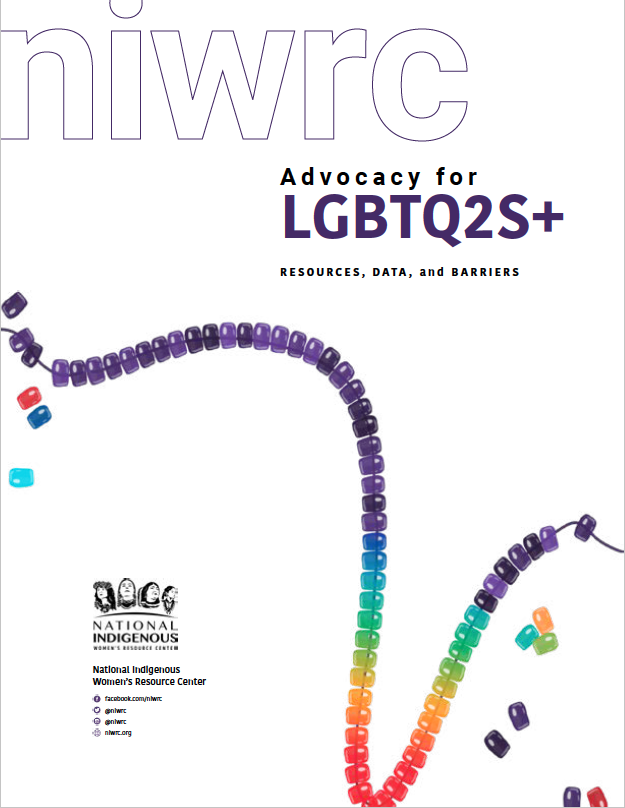Toolkit
Advocacy for LGBTQ2S+ RESOURCES, DATA, and BARRIERS

Across Indigenous communities and nations, the rates of intimate partner violence (IPV) are staggering. Historically, the problem of intimate partner violence has been predominately seen as cisgender-heterosexual (cis-het) men abusing cis-het women. Unfortunately, there is limited data and research on IPV existing outside the cishet population. Therefore, IPV data on the Indigenous LGBTQ2S+ community is limited. The need to spotlight IPV among the Indigenous LGBTQ2S+ community was discovered as a result of the National Intimate Partner Sexual Violence Survey1 finding that the LGBTQ community experience high rates of violence that is equal to or worse than the cis-het population (Walters, Chen, & Breiding, 2013). No longer can we afford to overlook violence against Indigenous LGBTQ survivors. Acknowledging and understanding IPV in the LGBTQ2S+ community is imperative because our approach to ending violence against our LGBTQ2S+ relatives will require an inclusive, social justice, an anti-oppression lens that is also intertwined with decolonial, re-Indigenizing foundations. In addition, we must understand that this violence co-occurs alongside a myriad of unique challenges and barriers, multiple layers of victimization and trauma, and systemic oppression and discrimination against the LGBTQ2S+ community. This resource brochure is designed to provide recent research, culturally grounded resources, and possible barriers one may face in the LGBTQ2S+ advocacy workforce.
1. Walters, M.L., Chen J., & Breiding, M.J. (2013). The National Intimate Partner and Sexual Violence Survey (NISVS): 2010 Findings on Victimization by Sexual Orientation. Atlanta, GA: National Center for Injury Prevention and Control, Centers for Disease Control and Prevention.
https://www.nsvrc.org/sites/default/files/2021-04/NISVS_SOfindings.pdf





